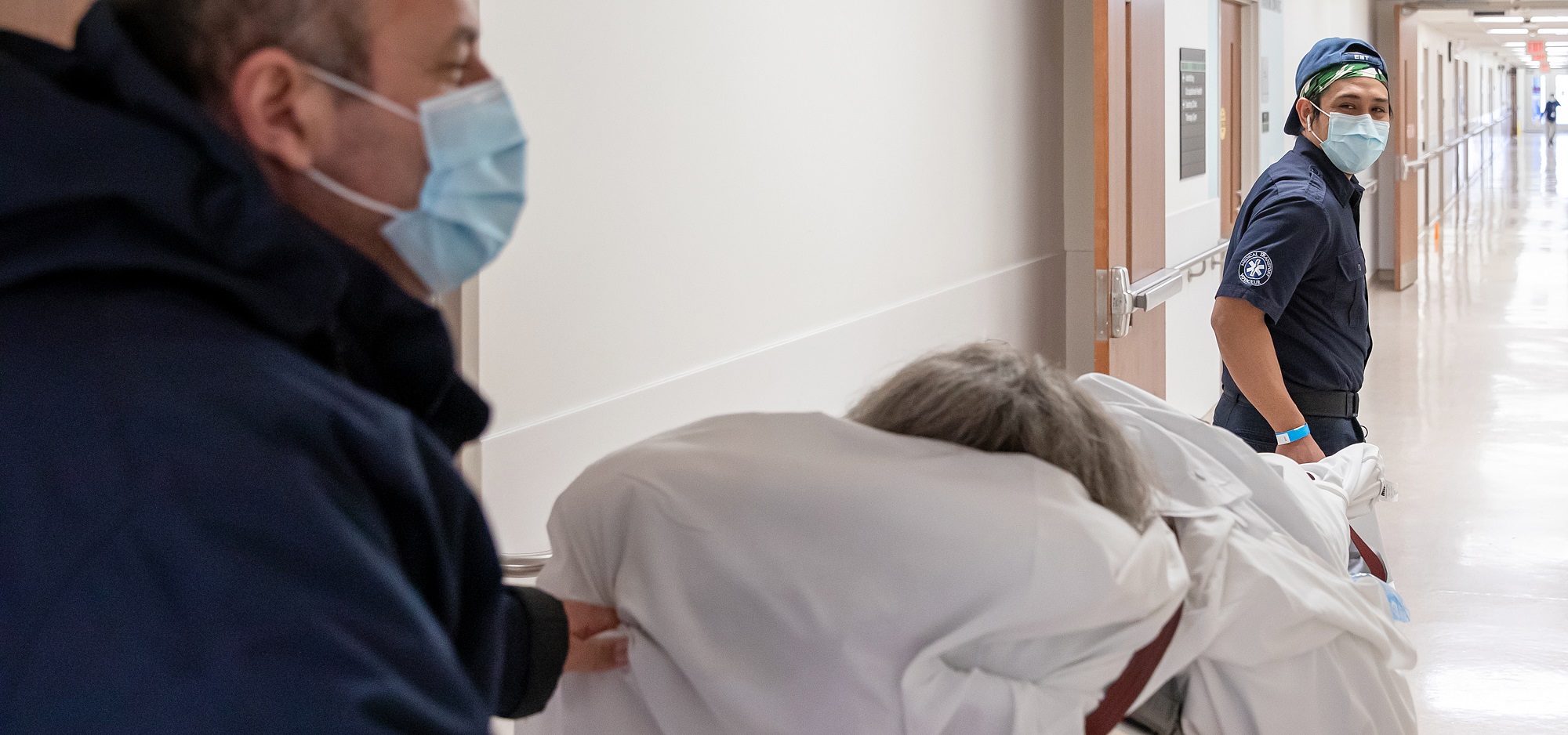
When the second wave of COVID-19 peaked in Toronto, Bridgepoint Active Health care was ready. As a rehabilitation and complex care hospital, Bridgepoint doesn’t have an Emergency Department or Intensive Care Unit. But it supported the COVID-19 response by making room to accept patient transfers from acute care hospitals to ease pressure in parts of the city hardest hit by COVID-19. Between December and the end of February, Bridgepoint accepted more than 100 of these types of patient transfers—more than any other post-acute care facility in Ontario.
The hospital started preparing for the potential surge in admissions in November. “We knew that we could play a key role in helping our acute care partners experiencing high volumes,” says Kim Sterling, Manager of Admitting and Utilization at Bridgepoint. We prepared to receive patients who no longer needed that acute level of care and were ready to move to a setting more suited to their needs.”
All admissions at Bridgepoint flow through the Admitting and Utilization team. Kim and her colleagues review every referral to get an understanding of each patient’s care needs. They then match each patient to an available bed. During the surge, the team was handling admissions related to the COVID-19 response as well as regular referrals. In December and January, Bridgepoint added 18 beds, expanding its capacity to meet the increased demand.
The Admitting team and care teams on the units worked together to ensure the safe and efficient admission of the large volume of patients. “Every unit in the hospital accepted at least one patient as part of our support for the COVID-19 response,” says Kim. If we needed to move patients or temporarily admit patients to a unit while waiting for another bed to open up, we worked together to make it happen.”
The Utilization team also adapted to help referring hospitals. “I spent a lot of time talking on the phone with other hospitals and I could hear in their voices that they were just overwhelmed,” says Kim. “We created a simplified version of our referral form to make it easier for them to quickly send us the information we needed about the patients we were admitting.”
Jackie Eli, Senior Director of Rehabilitation and Ambulatory Care at Bridgepoint, attributes Bridgepoint’s success to team work and dedication to a shared goal. “Ultimately, our work is about teams working together to meet the needs of patients and their families,” she says. “Because of this, we are able to support system capacity and optimize the resources available. By helping with the system response to COVID-19, we’re supporting our colleagues in other hospitals to continue providing the best care to their patients.”
